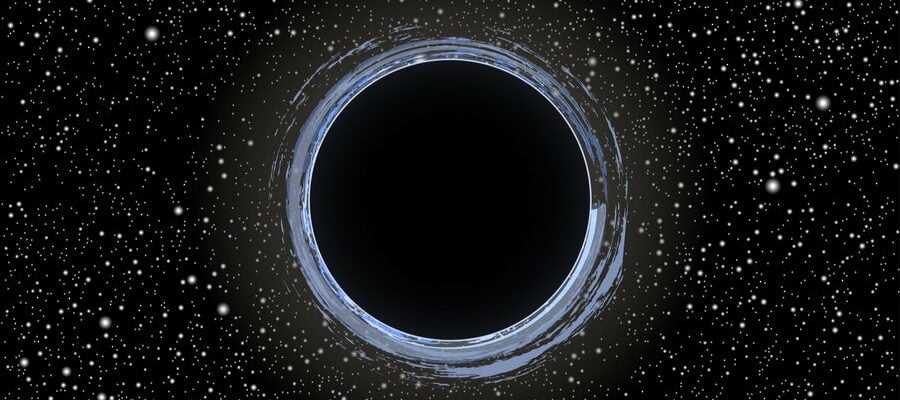Using a gravitational lensing phenomenon, astronomers have been able to detect a stellar black hole
, which is not linked to any known system, 5000 light years from our planet. If this is the first of its kind, these “loners” would be quite common, they’re just particularly difficult to detect.
By definition, a black hole is quite discrete…
Something distorts the image of a star…
The scientific article, barely proposed to theAstrophysical Journal (and therefore not yet validated by its peers) is causing a stir. Its authors have so far been known for their seriousness, but we will have to remain cautious. However, their discovery would come to validate a work of ten years, to confirm the presence of a black hole thanks to a gravitational lensing effect. Indeed, when a very massive object passes between us and an object that we wish to observe, it can distort the light of the one behind it, which appears a moment brighter.
Although this effect has only really been understood for about fifteen years, it is increasingly used to discover distant galaxies, but also particular stars, and even exoplanets. The gravitational lens observed via this scientific campaign took place in 2011, identified “MOA-2011-BLG-191/OGLE-2011-BLG-0462” (cute little name).
Proving the existence of a black hole…
Except it wasn’t at all obvious that it was a gravitational lens, let alone a black hole in the center. In general for this type of event, astronomers observe massive stars, clusters… But this time, they just observed the increase in luminosity of the star “in the background”.
Once they proved that it was indeed a lens (the long-term brightness curve leaving no doubt), they worked to show what would have generated it. A planet would not have been massive enough. A star would have produced radiation… But this one emitted nothing. And via the deformation of the image of the star, they knew its distance and were able to estimate its mass. It would therefore be an isolated black hole, “drift”, with a mass of about 7 times that of our Sun, and 5000 light years away.
We don’t see them, that’s the problem
To discover this solitary black hole, it will still have taken years of research, eight separate observations by Hubble and a lot of precautions to determine if this black hole was alone. Because the whole problem is that they don’t emit anything, so you have to rely on changes in the “background”… Which itself is not always exactly well documented.
If confirmed, this discovery will be the first of its kind… But modern astrophysics predicts that there are thousands, and probably even millions of these black holes, just inside our Milky Way! Do not panic though: not only is there no trace of one of these drifters near us, but in addition, thanks to future telescopes like the Nancy Grace Roman (planned by 2025-26), this type of discoveries through gravitational lensing effects should flourish.
Source: Universe Today

12